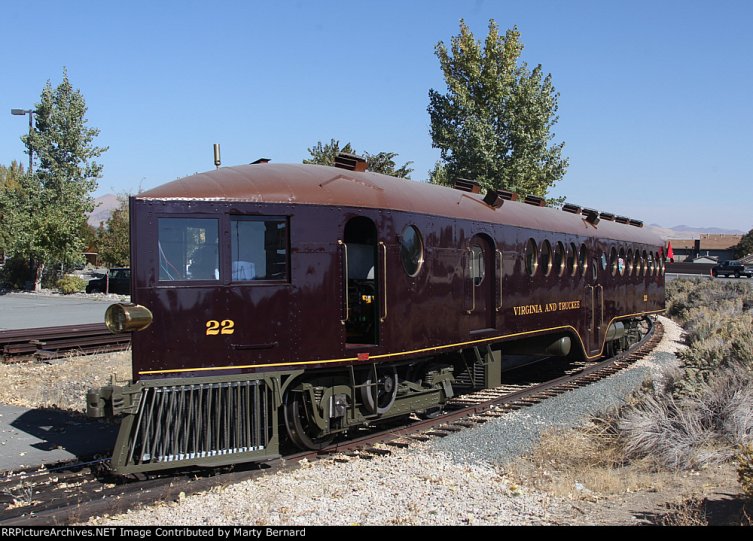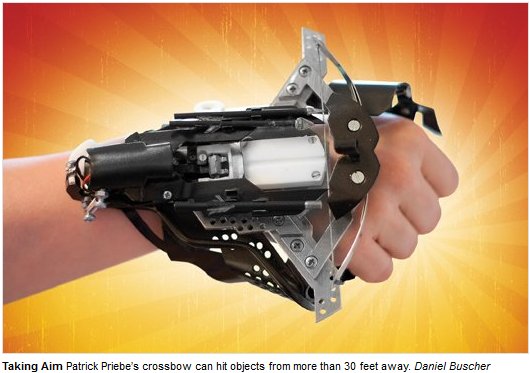A few pictures from RR Picture Archives by Marty Bernard, showing the most Steampunk-appropriate railway vehicle, the McKeen Motor Car. This example is painted in Virginia & Truckee markings:
March 8, 2012
Woolley: We need power tools (and cars) for girls
Over at the Worthwhile Canadian Initiative blog, Frances Woolley marks International Women’s Day:
Goods are becoming ever more specialized. Everything from baby diapers to multivitamins is now dispensed in gender- and age-appropriate models. Yes, it makes sense to have his and hers jeans. But gender appropriate soft-drinks? Does the average guy’s masculinity really need to be bolstered by buying Coke Zero instead of Diet Coke?
The profitability of his and hers products is partly due to price discrimination. The local hair salon charges women more than men because women are prepared to pay $50 or $60 to get their hair cut. Men asked to pay that price would just walk across the road to the barber shop that charges $15 for a short back-and-sides.
[. . .]
Second, gender differentiated power tools. I have small hands. My palm sander doesn’t fit into my palm — it’s more like a two-handed sander. I’d love to get a new drill, but most have such a large grip that I can barely hold them. It’s not just a gender issue — men’s hands come in all sorts of different sizes, too. How can women be expected to share equally in home repair duties when every power tool is the wrong size for their hands?
Finally, I’d like to see more cars built with features that appeal to women. I’ve heard — but I don’t know if this is true — that as soon as a particular model of car is perceived as being “girly,” men won’t buy it. Since men still constitute the majority of car buyers, sales collapse. I’ve heard this offered as an explanation of the lack of cars like the Smart car — two person vehicles that use hardly any gas, and are easy to drive and park on city streets. Smart cars are just too cute, and cute=girly, and girly is the automotive kiss of death. But what is the cost of this pursuit of masculinity?
Cool little crossbow you wear on your wrist
Tom Kelley sent me a link to this article on a neat little device that I suspect violates weapons laws in most jurisdictions:
Last October, after hurting his knee playing hockey, Patrick Priebe was holed up in his apartment near Cologne, Germany, with nothing to do. He was sitting at his computer, staring at his keyboard, when the “Y” key caught his eye. Priebe didn’t see a letter. To him, it looked like a crossbow. Immediately he knew what his next project would be.
[. . .]
To fire, he pulls back the wire, hooks it around a brass block, and places an arrow in the groove. When he flicks the thumb trigger, the brass block drops, the wire pops forward, and the arrow flies.
Army training simulators have come a long way from blanks and oversized firecrackers
Back in my day, we trained with blanks and “arty simulators” which were just oversized firecrackers with an attached whistle (simulating the fall of shot before it exploded). Today, the market for combat simulation is huge and growing fast:
Towards the end of the Gulf war in 1991, an American armoured scout unit in Iraq’s southern desert stumbled upon a much larger elite force of dug-in Iraqi armour. Rather than retreating, the nine American tanks and 12 Bradley fighting vehicles attacked. When the battle ended about 25 minutes later, the Americans had destroyed, by one tally, 28 Iraqi tanks, 16 armoured vehicles and 39 trucks without suffering a single loss. The Battle of 73 Easting, named after a map co-ordinate, is now considered a masterpiece of American tactical manoeuvring. It prompted America’s Department of Defence to build a digital model of the battle for training.
Neale Cosby, the retired army colonel who led the project at the Institute for Defence Analyses in Alexandria, Virginia, says it let commanders watch the action on panoramic screens, select alternate points of view and identify potential improvements in weaponry and tactics. The software was then upgraded so that it could be played like a video game in which “what if” circumstances — foggy night-time fighting against upgraded vehicle armour, say — could be tested. Widely demoed in Washington, DC, during the 1990s, the model kick-started “heavy-duty funding” for combat simulators, says Timothy Lenoir of Duke University, and began a technological revolution that has transformed training and changed the way war is waged.
[. . .]
Motion Reality, a firm based in Marietta, Georgia, that provided some of the technology used to animate “Avatar”, “King Kong” and the “Lord of the Rings” films, has built a mixed-reality “fight simulator”, called VIRTSIM, in conjunction with Raytheon, an American defence contractor. America’s Federal Bureau of Investigation began using the system in January at its academy in Quantico, Virginia, and it has also been sold to a Middle Eastern country. Training in an area the size of a basketball court, 12 commandos wear goggles that display high-resolution 3D images delivered wirelessly […]. Real objects in the training area commingle with computer-generated ones such as buildings and enemies. A virtual insurgent can be realistically displayed in the goggles of trainees who look in his direction — even if everybody is running. Trainees wear electrodes that deliver a painful shock when they are struck by a virtual bullet or bomb blast.

 Click to see full size image at RR Picture Archives
Click to see full size image at RR Picture Archives


